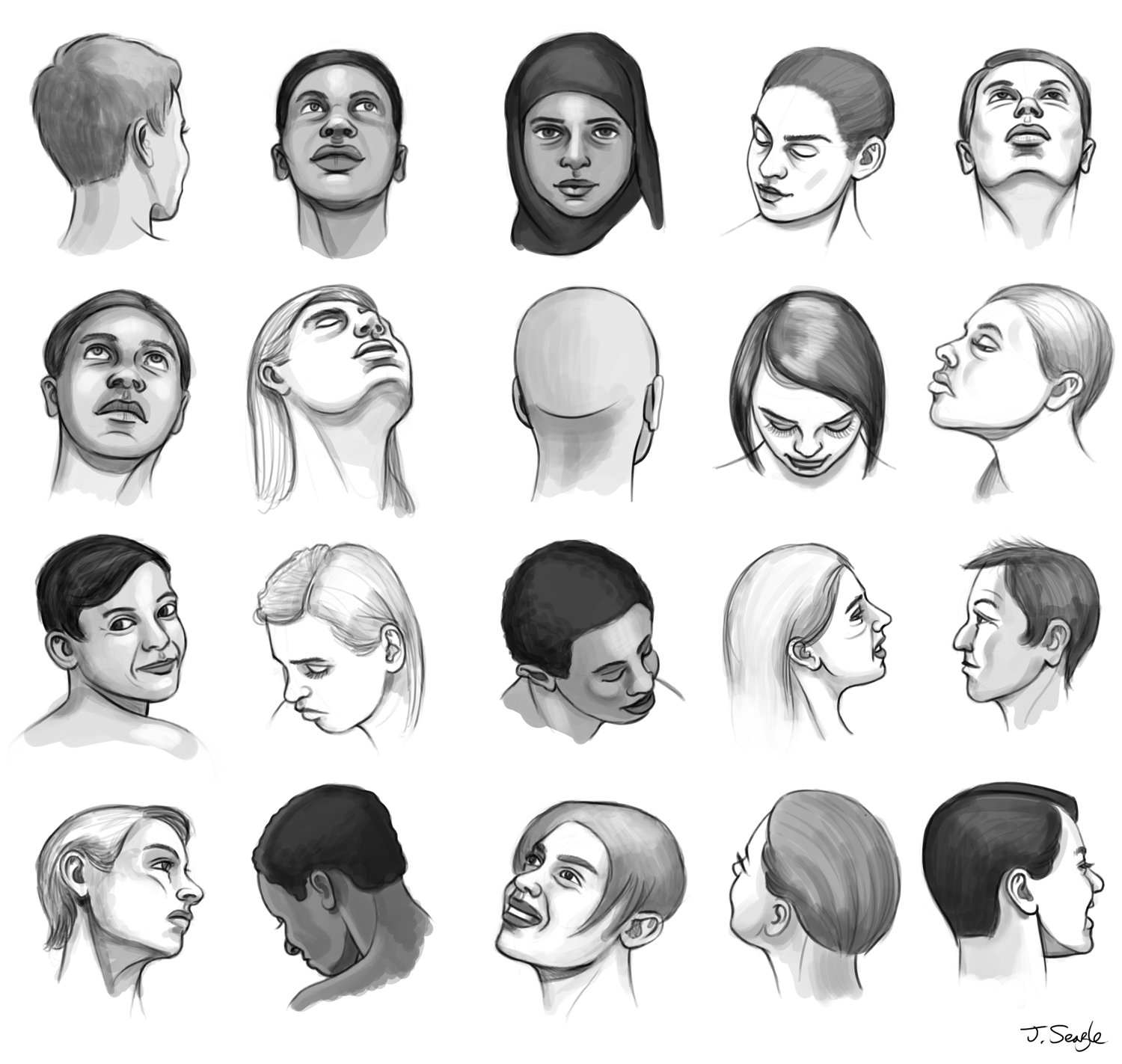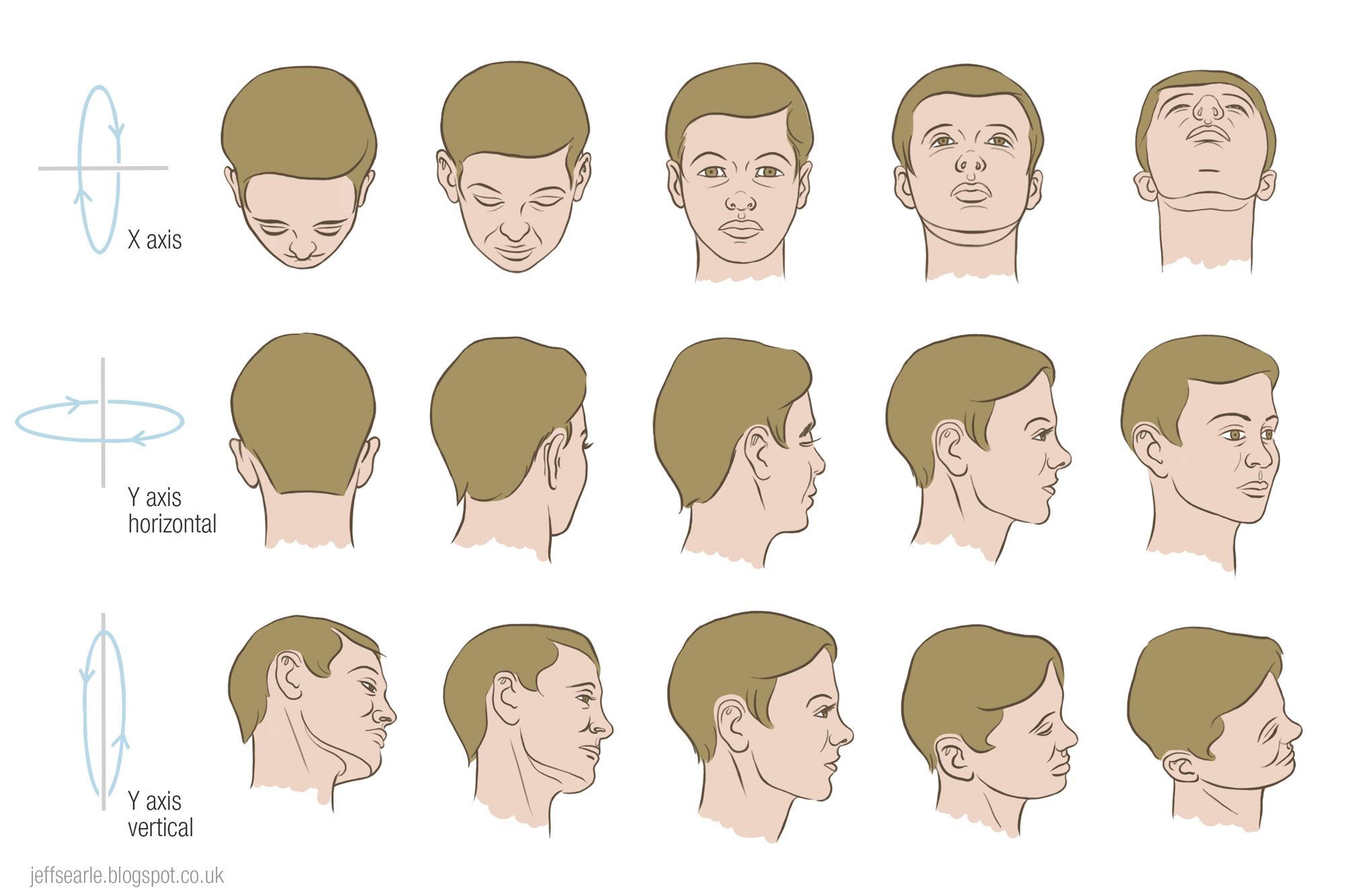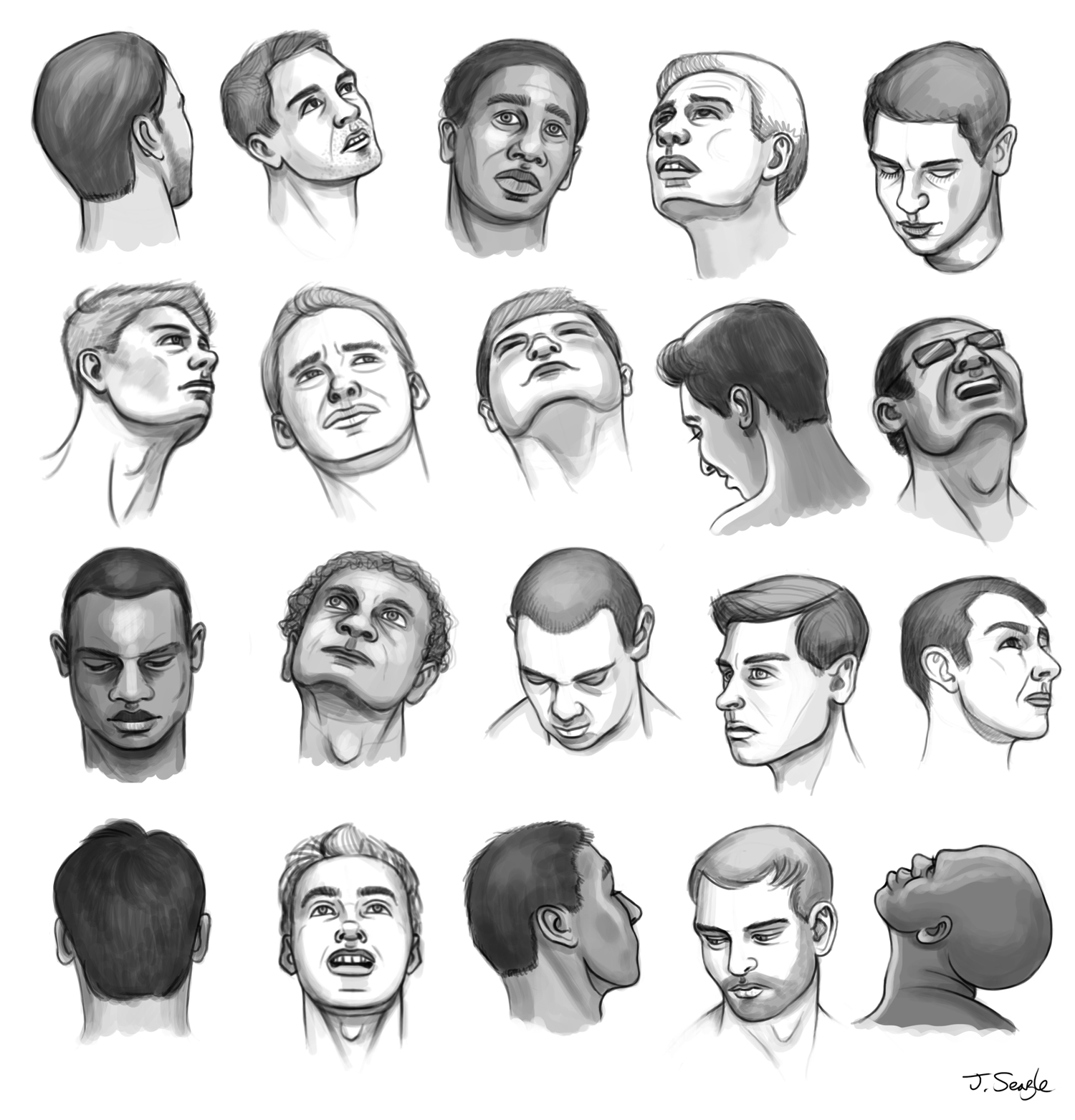In the blogpost on Drawing the Simple Head we started with a solid, three-dimensional form, a sphere, and drew measuring lines on it to help us place and relate the features. This is a more detailed look at the same thing.
How the features change
In the diagram below I have drawn some examples of how the features change their appearance as the head moves through various positions.
By the way, we’ll discuss the muscles and forms of the neck separately. For now, think of the neck as a cylinder below an egg-shaped head. It is a bit lower in the front than at the back.
Top row: We see the head shifting from being angled down to being angled up. See how in the first stage the eyes get obscured under the brow, and the mouth under the nose. The position of the ears is very helpful: as the head looks down they rise above the browline, and as the head looks up they fall below the level of the mouth. Note also the importance of that extra plane under the jaw, between the chin and the neck.
Middle row: The head turns from the back toward the front, gradually revealing more of the features.
Bottom row: A rotating side view of the head. As before, the ear is a particularly good indicator of what’s going on.
Below I have included a further diagram illustrating how the appearance of the head changes. I found this online and have no idea where it is from, otherwise I would provide a credit – but I wanted to share it as it’s a great illustration. Notice the contour line that runs down the front of the face, and see how it runs over the features, extending out along the nose, turning back in underneath, curving over the lips, and down the neck. Not only is this a guide to the direction the head is pointing, it models the head as it goes, reminding you that all these features have their own forms, their own solidity, their own depth or extension in relation to one another. Even an experienced artist, though he or she doesn’t usually bother to draw guidelines over everything, is on some level imagining the line is there.
You should study this and copy each angle shown. But of course, that isn’t enough. You need to draw as many real people’s heads as you can. Hundreds of heads, from every direction. Don’t forget to look from behind, too. Find photos of people on the internet and make drawings from them – by eye, no tracing! They don’t have to be detailed, polished drawings. The purpose for now is to learn the placings and proportions.
The jaw
Pay particular attention to the changing shape of the jaw as the head moves around. You can see from the illustration above that when we look downwards the jaw converges into a triangular shape. When we move head upwards, the tip of the chin draws level with the angle of the jaw. And when we tilt the head upwards further still, we see a distinct plane where the bottom of the head meets the cylinder of the neck.
Perspective
We all know that objects get smaller as they get further away. This applies to the nearest and farthest parts of the same object, too. In the illustration below, note how the length of the book gets shorter as it recedes into space, and how the far edge becomes shorter than the near edge:
We find it easier to imagine a box in perspective than something as awkward as the human head. So think of the head as a kind of box. As the head turns away from us, it will recede into space and the distances will grow shorter.
Using the divided ball and plane method, we divide the head into thirds to help us place the features. In perspective, the lengths of the thirds will get progressively smaller as they recede, i.e. towards the bottom of a head tilted down, or the top of a head tilted up.
Now draw heads
Remember, humanity is diverse, so please don’t reproduce the same face countless times over. Look for a variety of age, sex, race, mass, etc, because your work will be richer for it.
Below are a couple of sheets of heads that I drew for this exercise: not polished masterpieces, just sketches done fairly quickly to try and capture certain angles. You should probably be more adventurous than I was here. You learn a lot doing extreme angles.







Thanks you so much this tutorial very helpful. You are great.
ReplyDeleteThis is very useful, thanks for sharing
ReplyDeletethanks so much for making Andrew Loomis's information much clearer. Much appreciated you sharing with us all.
ReplyDeleteHow can i say thanks to you about this reference, thank you so much !
ReplyDelete